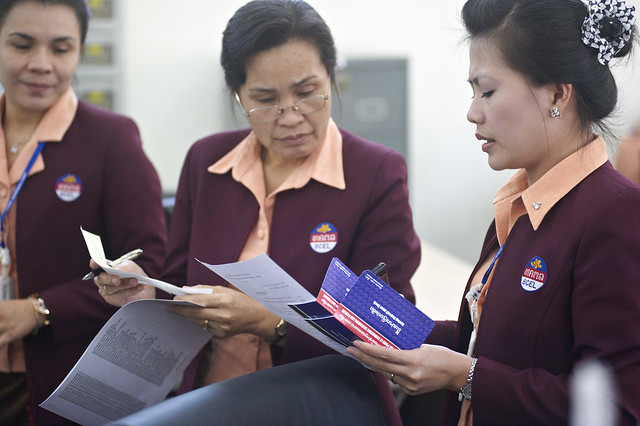The Lao PDR COVID-19 Response Project, approved in April 2020 and expanded in mid-2021, has a total project value of $33 million. The project helped Laos upgrade its target of vaccinating 50% of the population by the end of 2021 to a revised goal of 70%. By August 2022, over 80% of the target population had received a first dose of vaccine, while 71% had received two doses. Booster doses continue to be encouraged. The project delivers emergency medical equipment and supplies, enhancing the technical capacity of health professionals at the frontline, and builds isolation facilities, intensive care units and laboratories. The Bank has been conducting a series of COVID-19 Rapid Monitoring Phone Surveys across Laos since mid-2020, gathering and analyzing data on the social and economic impacts of the pandemic. The results of five survey rounds are available. Further surveys have been conducted to gauge satisfaction with the national response to COVID-19, so as to inform response to future emergencies.
Supporting the government’s green growth strategy, the Scaling-Up Participatory Sustainable Forest Management Project is helping build a solid foundation for the strategically important forest sector in Laos. The project has worked with over 100,000 people, largely from ethnic minorities, in over 650 forest villages. Livelihood support and casual employment in forest restoration have reduced the deforestation rate and saved an estimated 1.8 million tonnes of carbon dioxide-equivalent emissions. Work on management plans for state production forests and third-party certification of wood products has helped to modernize the sector and to create the new Forestry Law of 2019. Complementing this, the Second Lao Environment and Social Project has strengthened environmental management policy and capacity, updating the country’s Environmental and Social Impact Assessment Decree, and the Environment Protection Law. Laos is now publicly disclosing air pollution data, environmental compliance monitoring reports, and a state of the environment report. The project also strengthens forest management systems, promoting conservation-friendly livelihoods in 191 villages and strengthening the capacity to curb the illegal wildlife trade.
Since 2018, the Lao Agriculture Competitiveness Project has supported the development of rice, maize, and vegetable value chains in five provinces, providing grants for farmer groups to adopt good agricultural practices (GAP) and helping to improve post-harvest management and increase processing efficiency. By June 2022, 56,000 farmers had been trained in GAP and early results show increases in yield, sale price, and profit, along with reduced production costs. Average rice yields in 2021-22 reportedly increased by up to 9% in the wet season and 14% in the dry season. Net profits increased by as much as 21% for seed multiplication groups and by 41% for farmer production groups, with production costs falling by up to 19%. The project helps agribusinesses draw up agreements with farmer groups to get produce to market, assisting through business plans and grants. Progress has also been made in policy reforms, including a rice export strategy, agriculture quality mark guideline, and various manuals to improve rice milling standards.
By building water resource management capacity at regional and national levels, the Mekong Integrated Water Resources Management project helps Laos attend to its unique water security risks and opportunities, and enables more informed and confident regional dialogue. On transboundary issues, the project supported preparation of three joint action plans and issues papers to identify where stronger integrated water resource management is needed, and to help advance regional dialogue. Nationally, the project supported drafting and adoption of a new Water Resources Law, helping develop and pilot accompanying regulations. Comprehensive water resource modelling packages were developed for ten river basin management plans. To contribute to a cohesive country-wide meteorological and early warning system, and improve the capacity of water resource management agencies to engage in integrated planning, 89 hydrologic and meteorologic systems were established. An estimated 250,000 people, over half of whom are women, have benefited from this project’s irrigation, drainage, and fisheries management activities.
The Bank works with development partners to support the Ministry of Finance’s efforts to improve public financial management. The Enhancing Public Finance Management through Information and Communication Technology and Skills (E-FITS) project, funded by IDA, has upgraded the government’s debt management and financial information systems, enabling improved accuracy of accounting and financial reporting, and more effective and transparent debt management. The procurement process for a new financial management information system is underway, with the new system is expected to significantly improve the efficiency and reliability of budget execution, financial reporting, and the transparency and accountability of the whole system.
The recently completed second phase of the Public Finance Management Reform program has helped the finance ministry advance reforms to make the budget more credible and predictable, and advised on how to improve cash management through a Treasury Single Account. The project contributed to the development and roll out of implementing instructions for four tax laws, and introduced a modern, risk-based approach to audits in tax administration. A new public procurement website was developed and launched in April 2022, while standard bidding documents, a procurement manual, and training were provided to help government officials apply the public procurement law. To further improve civil service data records, a personnel information management system and training support were expanded to all 18 provinces, and legislation on a Code of Ethics rolled out nationwide with promotion materials. The success of this work has led to demand for a third phase of reforms, co-supported by development partners.
The Lao PDR Southeast Asia Disaster Risk Management Project helps reduce the impacts of flooding in target areas and enhances government capacity to provide hydro-meteorological services and disaster response. The project had completed 80% of riverbank protection works in Muang Xay, Oudomxay province, by August 2022 and constructed two provincial hydro-meteorological offices, in Phongsaly and Oudomxay. Laos now has insurance in place for natural disasters through the Southeast Asia Disaster Risk Insurance Facility, which issued a policy in March 2021.
Last Updated: Sep 30, 2022








